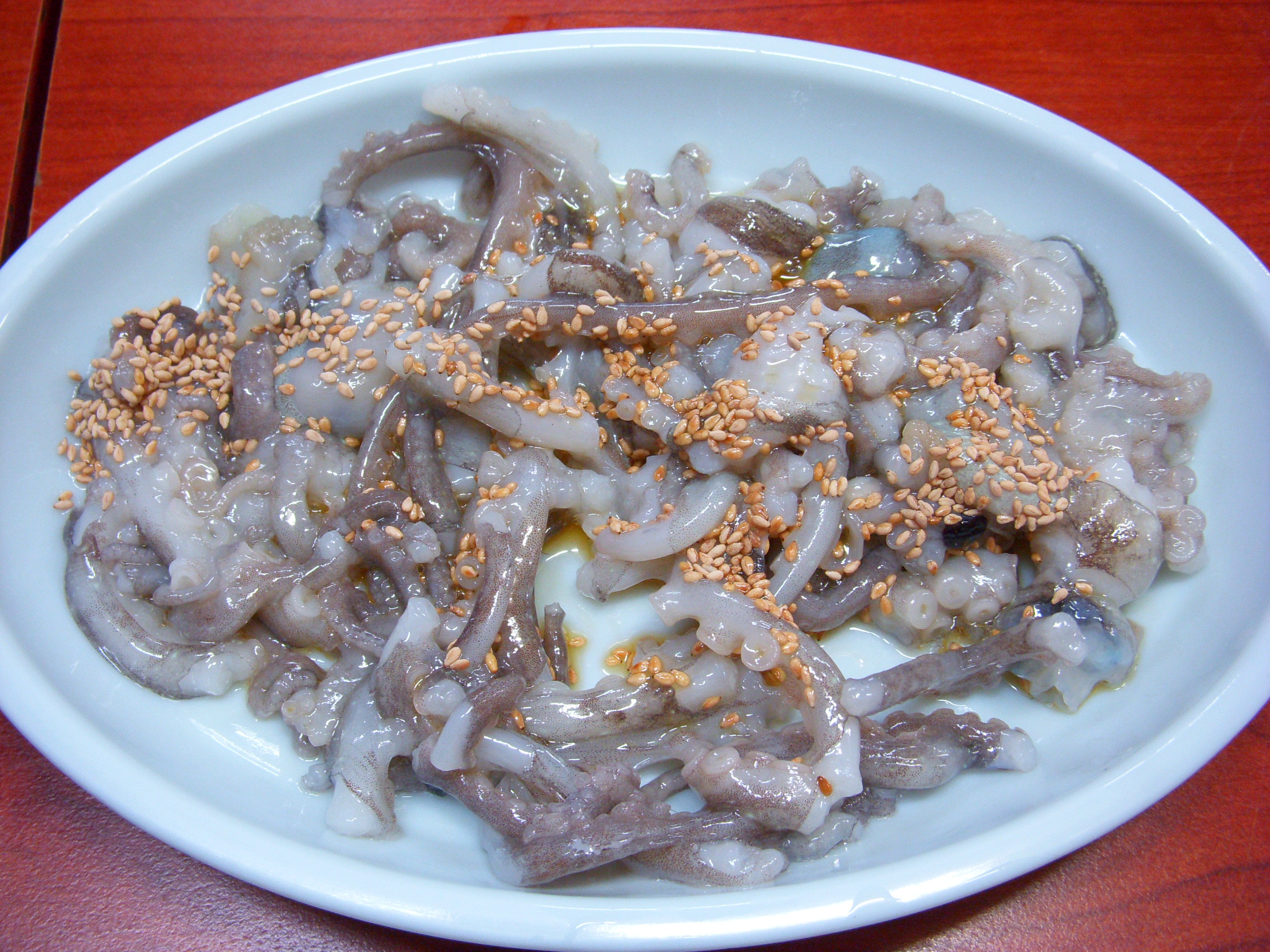- Sannakji
hangul=산낙지
rr=sannakji
mr=sannakchi"Sannakji" or "sannakji hoe" is a variety of "hoe", or raw dish, in
Korean cuisine . It consists of live "nakji" (hangul : 낙지, a smalloctopus ) that has been cut into small pieces and served immediately, usually lightly seasoned withsesame andsesame oil . The nakji pieces are usually still squirming on the plate. It can also be served whole.Because the suction cups on the arm pieces are still active when the dish is served, special care ought to be taken when eating sannakji. The active suction cups can cause swallowed pieces of arm to stick to the mouth or throat. This can present a choking hazard for some people, particularly if they are intoxicated. One must thoroughly chew so that no piece is big enough to stick to one's throat. Some people like the feel of the pieces wriggling as swallowed, and so will not completely chew up the particles. Those who are new eating sannakji should completely chew it up into tiny particles before swallowing.
Vocabularies in the two Koreas differ on "nakji": South Koreans call a small kind of octopus "nakji", while North Koreans call a squid "nakji" ("nakchi" in
McCune-Reischauer ).Anju
"Sannakji" is served in sliced-raw-fish restaurant but also can be found stoll bar in the streets of South Korea. Many people are willing to drink
soju with "sannakji". But as mentioned, one must be careful to chew thoroughly. Several incidents of choking due to a blocked airway have been reported. One of the latest incidents occurred inGwangju . ["광주서 산낙지 먹다 기도막힌 사고 잇따라" Yeonhap News 2008-01-21 http://news.naver.com/main/read.nhn?mode=LSD&mid=sec&sid1=102&oid=001&aid=0001931575 (KOR)]In popular culture
*Sannakji is featured prominently in a scene from the Korean film "
Oldboy ".
*InThe Amazing Race 4 , eating an entire bowl of sannakji was a detour challenge when the teams were inSeoul, South Korea (Leg 10). According to the clue, they had to eat a "Korean delicacy" but would not know that it was sannakji until it was served to them. Two teams attempted this detour but only one team fully completed eating the entire bowl.ee also
* "
Odori ebi ", shrimp eaten alive inJapanese cuisine
* "Ikizukuri ", the preparation of sashimi from living animalsReferences
External links
* [http://thedailykimchi.blogspot.com/2007/07/eating-live-baby-octopus-in-korea.html An English Teacher in Korea's Sannakji Experience]
Wikimedia Foundation. 2010.

